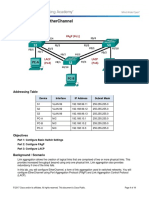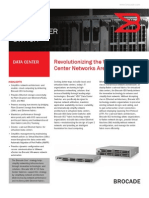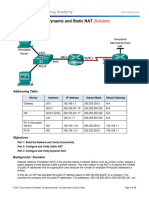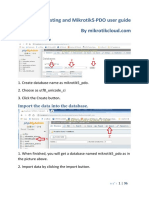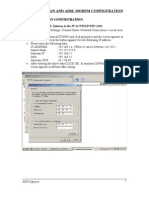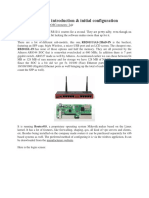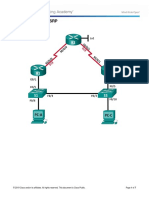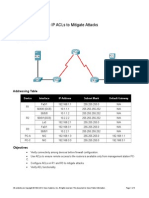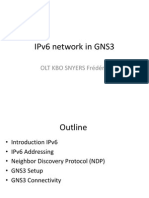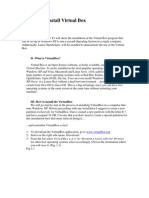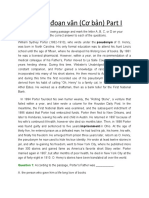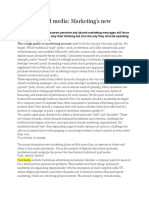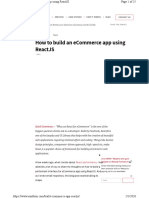0% found this document useful (0 votes)
402 views4 pagesNAT Configuration
This document discusses configuring different types of NAT:
1. Static NAT allows inbound and outbound traffic for a single IP address and is used to access servers from outside the network.
2. Static NAT with port forwarding allows multiple servers to use the same public IP by forwarding traffic to private servers based on port numbers.
3. Dynamic NAT uses a pool of public IP addresses and matches private addresses to this pool using an ACL for address translation. Overload NAT allows multiple private IPs to map to a single public IP by overloading ports.
4. PAT (Port Address Translation) is the most common type of NAT for internet access. It operates similarly to overload NAT but with dynamic public IP addressing
Uploaded by
abalo afiCopyright
© © All Rights Reserved
We take content rights seriously. If you suspect this is your content, claim it here.
Available Formats
Download as DOCX, PDF, TXT or read online on Scribd
0% found this document useful (0 votes)
402 views4 pagesNAT Configuration
This document discusses configuring different types of NAT:
1. Static NAT allows inbound and outbound traffic for a single IP address and is used to access servers from outside the network.
2. Static NAT with port forwarding allows multiple servers to use the same public IP by forwarding traffic to private servers based on port numbers.
3. Dynamic NAT uses a pool of public IP addresses and matches private addresses to this pool using an ACL for address translation. Overload NAT allows multiple private IPs to map to a single public IP by overloading ports.
4. PAT (Port Address Translation) is the most common type of NAT for internet access. It operates similarly to overload NAT but with dynamic public IP addressing
Uploaded by
abalo afiCopyright
© © All Rights Reserved
We take content rights seriously. If you suspect this is your content, claim it here.
Available Formats
Download as DOCX, PDF, TXT or read online on Scribd
/ 4


